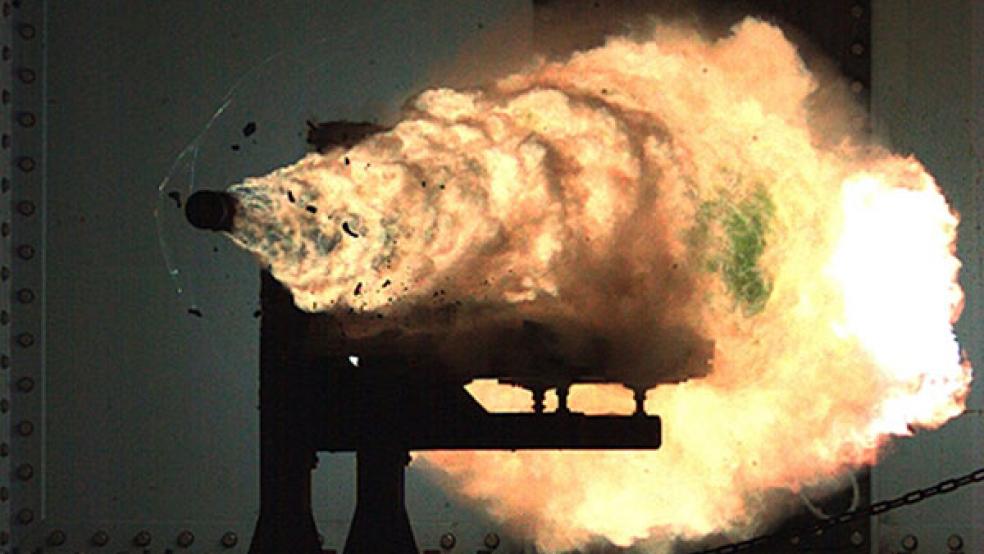Leaders at the U.S. Defense Department are already planning to hand over the keys to a new administration in 2017, leaving major technology projects in place so that the country can maintain its edge against rival powers including Russia and China for years to come.
One of the most dramatic is the Hyper Velocity Projectile, which can reach speeds of 5,600 miles per hour.
The HVP is basically a flying spike. The shell can fly between 30 and 100 miles, depending on how it’s fired, and has a variety of potential effects, including air burst, penetrator and high explosive – making it a powerful weapon against surface and ground targets.
The HVP is one of the key investments the Pentagon plans to make for fiscal year 2017, Deputy Defense Secretary Bob Work said Monday during an event at the Atlantic Council, a Washington think-tank.
Related: The 10 Most Expensive Weapons in the Pentagon’s Arsenal
Work, who has overseen the strategy, said one of the ways to fund HVP was to show the next administration why developing the HVP gun is a better investment than planned invests in the Navy’s electromagnetic rail gun.
Defense officials have said, “We thought rail guns were going to be something we were really going to go after but it turns out that powder guns” can fire the same projectiles at the same speed and at less cost, he said.
Related: 2 Futuristic Aircraft That Could Replace the Black Hawk Helicopter
"So, we're going to say, 'Look, we believe this (HVP) is the place where you've got to put your money,’” Work said. "But if the next administration says, 'That [electromagnetic rail gun] is really the way we want to go,' we've set you up for success."
BAE Systems and General Atomic have built rail gun prototypes for the Navy. The service is asking for $3 billion in the next fiscal year to spend on rail gun and Hyper Velocity Projectiles, as well as solid-state lasers.
The Pentagon spent $364 million on the HVP in fiscal years 2015 and 2016; the agency asked for another $246 million for the effort in its fiscal 2017 budget request.





